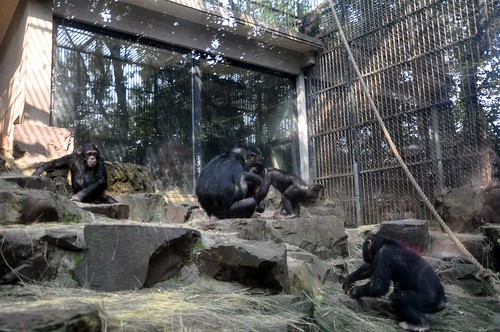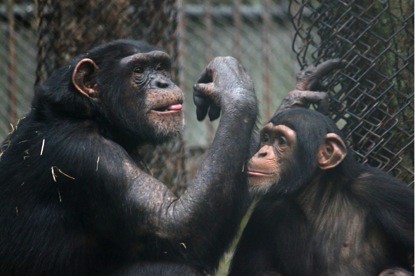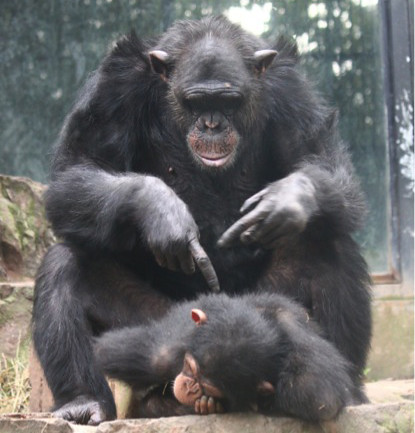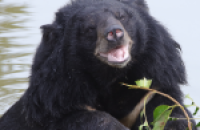Learning to change the lives of animals
11 September 2014
Animals Asia’s work to instil animal welfare principles in zoos across Asia sees experts regularly organise workshops in China and Vietnam.
Hangzhou Zoo Keeper Lou Yi was a recipient of a presentation by Hilda Trez, Behavioural Manager of America’s Phoenix Zoo. He tells how the workshop influenced him personally and rejuvenated the lives of animals on site.
Before the workshop, we had seven chimpanzees; two adults who were housed together, and another five sub-adults and juveniles housed together.
Through Hilda’s introduction, we learned that the chimpanzee is a highly social species. Their social structure and communication would have a positive influence on their physical, psychological and behavioral health, and also reduce stress and abnormal behaviors. Hilda taught us that by introducing chimpanzees to a social group, the zoo could improve husbandry management, animal welfare, and the education of the public.
After discussion with management and keepers, Hilda began to integrate the chimpanzees. When these seven chimps were released out together on the first day, the babies were active and the adults were busy taking care of them. They did not fight or bite which relieved us all.
Over the five days we were able to successfully integrate seven chimpanzees into one group. After a year’s observation, I think the introduction has been very successful. The youngest two chimpanzees are well taken care of by the two adult females, and no longer bullied. The two adult females have shown the most remarkable changes after being joined by the younger chimpanzees. They are now much more active, and have better appetites than before.
Because of the tight schedule, Hilda had to leave Hangzhou for other zoo work, but she has kept in contact with us via Animals Asia, and continues to answer our questions.
Something of great importance that we learned from Hilda was the use of substrates - lining for their enclosure. Before this workshop, we had never used any substrates in the enclosures. Hilda’s presentation about the importance of substrates widened our visions and deepened our knowledge about their importance. As chimpanzees like to nest by themselves, it is critical to provide nesting materials every day to encourage their natural behaviour.
Since Hilda’s training, we have been providing substrates to our chimpanzees and it has worked fantastically! We have tried different kinds of such as hay, wood shavings and bark. After the success of the chimpanzee enclosure, we have started using substrates in other enclosures too, such as the golden monkeys, and it has turned out to be very effective – the monkeys love the substrates so much!
While using substrates, we also did some enrichment work by scattering food in it, making it harder for the chimpanzees to find so they spend more time expressing natural behavior by foraging. After the workshop, we also added more enrichment tools according to Hilda’s recommendations, such as feeders, rope ladders, and fire hose swing beds. The chimpanzees love the toys we provided and spend a lot of time playing on them.
During breaks, Hilda also spoke with many young colleagues who had graduated from college in recent years. These colleagues had various questions relevant to husbandry, substrates, enrichment and behavior. Hilda gave very detailed answers to our questions. As beginners in the area of animal care, we were able to learn a lot from her and the course.
BACK








 Healing the hidden wounds
Healing the hidden wounds
 Early summer awakening at the China Bear Rescue Centre
Early summer awakening at the China Bear Rescue Centre
 5 reasons the dog meat trade must end
5 reasons the dog meat trade must end